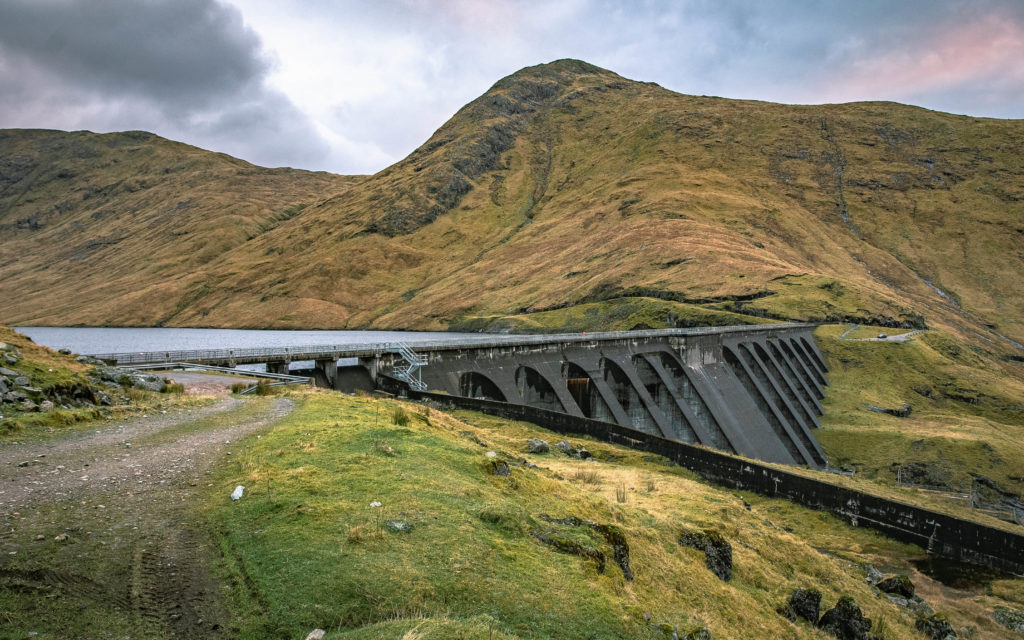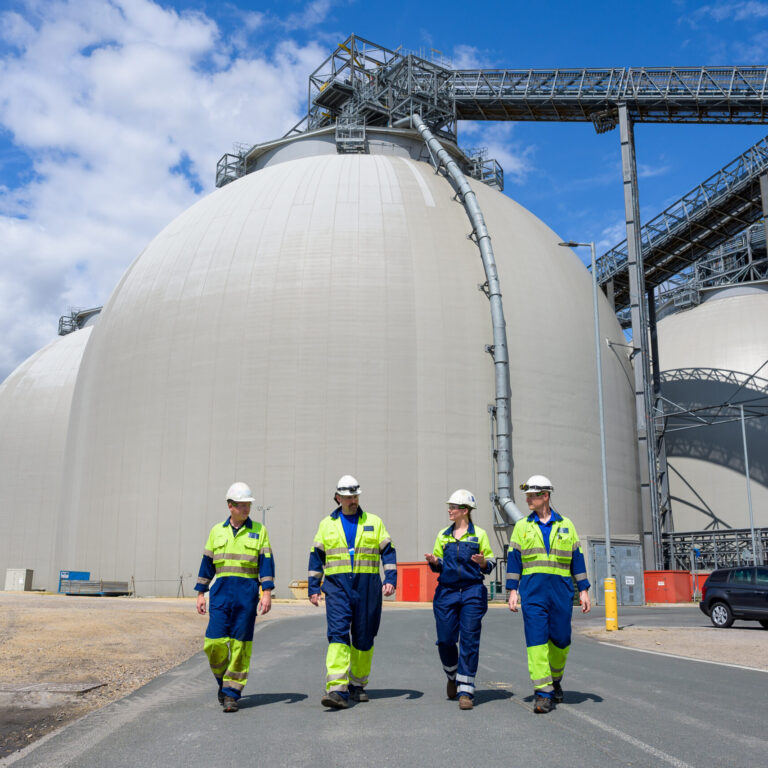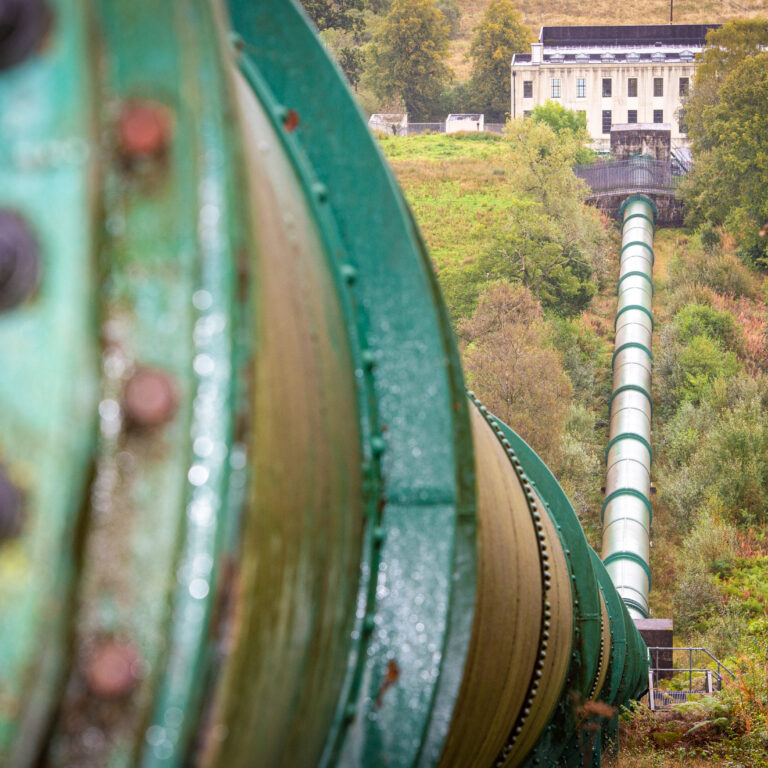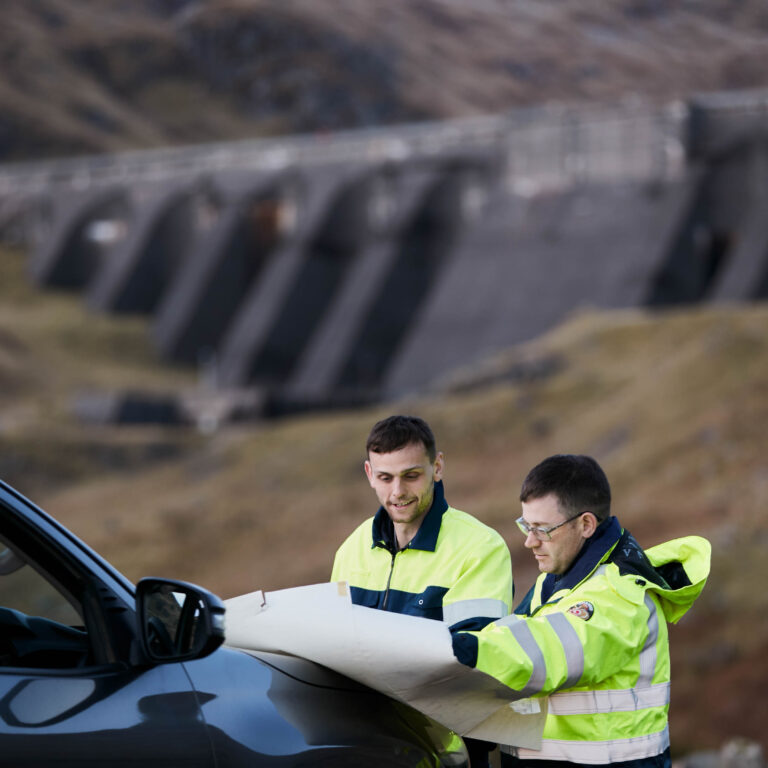Key takeaways:
- Scotland’s ambitious plan to expand its wind capacity and reach net zero by 2045 will require greater levels of energy storage
- Plans to expand the storage and generation capacity of Cruachan pumped storage hydro station from 440 MW to over 1 GW can help support a renewable future
- Greater levels of energy storage can also reduce the costs of operating the grid and enable the greater utilisation of renewable electricity sources such as wind.
- Expansion plans for Cruachan would bring as many as 900 jobs during the construction phase across the supply chain and continue Drax’s commitment to local communities and environments
- The project is a large-scale and long-term infrastructure solution to some of the critical issues faced by Scotland’s electricity network.
The hit Star Wars TV series Andor might be set a long time ago in a galaxy far, far away, but audiences in Argyll and Brute may recognise a local landmark on the titular distant planet.
Cruachan Power Station’s 316-metre-long buttress-style dam served as a setting for the space thriller. However, here on planet Earth, it has another big role to play in supporting Scotland and the UK’s efforts to reach net zero emissions.
The pumped storage hydro station, known as the ‘Hollow Mountain’, complements Scotland’s wider strategy to expand its onshore wind capacity to 20 gigawatts (GW) by 2030. The plant’s ability to absorb excess electricity at times of low demand, and discharge it again when needed, allows it to play a key role in balancing and supporting the national transmission system.
As Scotland and the rest of the UK move to a future increasingly powered by intermittent renewables, ambitious plans to increase Cruachan’s capacity to more than 1GW, will also help create jobs in Argyll and Bute and support communities through the net zero transition.
Scotland’s wind power potential
Scotland’s famously blustery, wet weather and dramatic landscapes of mountains and lochs has long enabled it to pioneer hydro schemes along its rivers, pumped storage hydro on its mountainsides, and wind turbines on and offshore.
Wind power contributed heavily to Scotland achieving 97% renewable electricity generation in 2020. And with more than 17 GW of additional capacity in the pipeline, Scotland has the potential to be the wind powerhouse of the UK – in 2021, Scotland exported 33% of its generation in net transfers to England and Northern Ireland, having previously set a record 37.3% in 2020.
However, simply generating a lot of power isn’t the whole story. Generating too much power can even be a problem for grids if there is nowhere for that power to go. Currently, constraints in the transmission system limit how much power can be exported from Scotland to meet demand in other parts of the UK.
When generators start producing these surpluses, the grid operator has to pay wind farms to turn them off. It’s estimated that wind curtailment costs added £806m to energy bills in Britain in 2020 and 2021. This is where energy storage comes in, offering somewhere for power to be redirected and reducing curtailment costs.
Enter Cruachan. At maximum load Cruachan Power Station can generate 440 MW, enough to power 1 million homes, when water from the upper reservoir is released, flowing through the plant’s four turbines, and entering Loch Awe below. But when there is more electricity on the system than demand, excess electricity can be used to power turbines that pump water up from Loch Awe to the upper reservoir where it’s stored until needed.
Pumped storage hydro, as this system is called, offers long-term, large-scale energy storage to the UK’s electricity system, helping to reduce costs and prepare for a renewable-led future.
The large-scale, long-term storage solution
Since opening in the 1960s Cruachan has only become more important in helping to stabilise an increasingly renewable UK, while supplying ancillary services like inertia to the grid. The Cruachan expansion plan to expand the facility and bring its ability to absorb and discharge electricity to more than 1 GW can offer a host of benefits to the grid and power to consumers across the country.
Cruachan’s ability to reach full generating capacity in less than 30 seconds means that it can respond quickly to fluctuations in supply and demand. When Cruachan provides power back to the system in times of high demand, it can in turn lead to lower peak power prices. This becomes even more important at a time of high gas prices, when ordinary consumers are feeling the impact of rising energy costs more than ever.
Increasing Cruachan’s capacity to generate and absorb power can help reduce transmission system costs and wind curtailment. It also offers a zero-carbon source of stabilising ancillary services to the grid, which have historically been provided by gas generators. As the proportion of gas generation decreases and the proportion of intermittent renewables generation increases, low-carbon generators that are able to provide these services will become increasingly more important.
Importantly, the Cruachan expansion is a long-term solution. The expanded facility would have an operational life span of more than half a century, significantly longer than the 10-15 years offered by lithium-ion battery storage solutions.
However, there is a need for a financial mechanism to de-risk the project for investors and offer value for money for consumers. The cap and floor mechanism, which ensures generating revenues remain within a specific range, is currently used for interconnectors to stabilise revenues by offering sufficient certainty to investors that income will cover the cost of debt, which unlocks finance for new projects. A similar mechanism could be introduced to support energy storage technologies that will be needed to support a renewable future, such as the Cruachan expansion. The UK government must act quickly to implement the mechanism and realise the opportunity that storage can provide to the UK and Scotland.
Making the Cruachan expansion a reality
Expanding Cruachan is a long-term, large-scale project that will create a range of jobs and economic benefits and help support the local economy through the transition to net zero.
“I am absolutely delighted that Drax is progressing plans to expand the Ben Cruachan site,” says Jenni Minto, Member of Scottish Parliament. “This will not only support 900 jobs and create a pumped storage facility that will be able to provide enough renewable energy to power a million homes, it will provide £165 million benefit to the local economy during construction.”
In addition to 150 on-site local construction jobs, the project’s supply chain will create opportunities across a range of industries, from quarrying and engineering, to transport and hospitality.
“The Cruachan extension is a really exciting project and one that’s really important for Scotland.” says Claire Mack, CEO Scottish Renewables. “It brings together a number of our really important skills, including civil engineering and electrical engineering. What we really want to see is a renewables industry that’s thriving but also driving economic gain in Scotland.”
Cruachan has operated in the region for more than half a century and has supported local communities through more than just job creation. This includes a donation to The Rockfield Centre in Oban to help fund a new community hub, offering education as well as a social space. Following Cruachan’s appearance in Andor, Drax also made a five-figure donation to several charities and good causes across Argyll, including Oban Mountain Rescue’s efforts to create a rural defibrillator network.
As well as lending a helping hand to local communities, Cruachan’s teams have always taken precautions to minimise any impact on the natural environment and preserve the area’s biodiversity and natural beauty.
The Cruachan expansion is an engineering project on an epic scale. It will involve carving huge new underground caverns, tunnels, and waterways out of the rock below Ben Cruachan. But in doing so it will create long-term opportunities for the local community and a key piece of infrastructure to take Scotland into a net zero future.




















